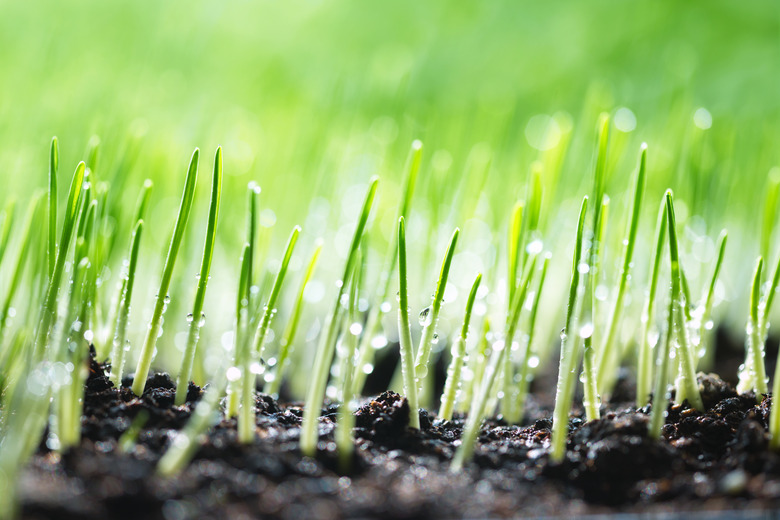Why Is My Newly Seeded Lawn Turning Yellow?
We may receive a commission on purchases made from links.
Grass is a plant, and in that capacity, it has few methods for communicating how it is doing to the gardener in charge. That's why nature designed it to change the color of its blades as things go wrong. Then, it's up to the gardener to figure out the problem and to fix it. It helps to get an overview of common issues and practical solutions before you begin.
Tip
Typical reasons for a lawn turning yellow are too much or too little water or fertilizer.
Provide More Water
Provide More Water
Healthy grass blades are a vibrant shade of green, the exact hue depending on the species of grass. If the blades start yellowing, the first thing to check is the amount of irrigation the grass is getting.
Young grass requires consistently moist soil in order to establish. This is true from the moment the seeds are sowed to the time the grass is mature and strong. Don't create puddles with the hose but do water regularly, up to twice a day right after planting. Cut this back to twice a week or so when the grass is established.
Provide Less Water
Provide Less Water
This may seen counterintuitive, but too much water can stunt grass root development to the same extent as too little water. If puddles form on the lawn after watering, you have provided too much water.
Overwatering leads to waterlogged grass, which leads to a shallow root system. The grass will be unable to uptake sufficient nutrients, oxygen, and even the water itself. Too much water can also reduce the plant's resistance to fungal diseases and insect pests. Turning yellow is how the grass blades react to any and all of these things.
Provide More Fertilizer
Provide More Fertilizer
Applying the proper amount of fertilizer provides the grass roots with the nutrients the plant needs to grow in green and dense. If your fertilizer application has been spotty, you may see grass in those areas turning yellow from nutrient deficiency. Look for yellow streaks or fluorescent discoloration on the blades of the grass in strips or spots.
The solution is obvious. You need to pay more attention when you apply lawn fertilizer.
Provide Less Fertilizer
Provide Less Fertilizer
Just like water, fertilizer is essential to lawn health, but too much can cause issues and yellowing grass leaf blades. That's because excess fertilizer can burn the lawn. Synthetic fertilizers are much more likely to do this than organic fertilizer since the excess nitrogen salts in these fertilizers can burn grass leaves, a condition known as leaf scorch.
There are other signs of too much fertilizer. Look for a crust that forms at the soil surface, grass blades that yellow at the base and brown on the top, and slow grass growth.
Avoid Other Harsh Chemicals
Avoid Other Harsh Chemicals
Any and all harsh chemicals can damage grass in any of its stages, from seedlings to mature turf. Avoid using chemical insecticides or synthetic fertilizers and try hard to keep cats and dogs from urinating on the lawn.
Salt used in cold-winter climates on roadways can also yellow the grass. The only way to deal with this if it happens is to water down the area well several days in a row.
